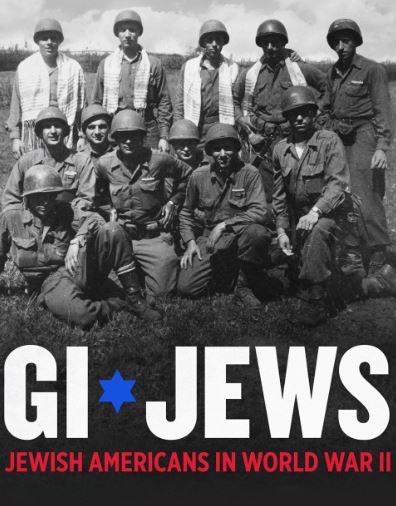
The Temple Israel of Natick, MA Men’s Club showed the film “GI Jews: Jewish Americans in World War II” for the whole congregation as part of their annual veterans program that was attended by approximately 50 people. This program is easy to plan and is quite impactful. One congregant said, “it made my proud to be an American Jew.” This program could be included as pa`rt of a Yom Hashoah program as well.
“GI Jews: Jewish Americans in World War II” tells the story of 550,000 Jewish American men and women who fought in World War II. These members of “the greatest generation” served because they were Americans, many of them first generation and the children of immigrants from Europe. They served to dispel any notion that Jews would not fight for their country.
The film shares their unique experience during the war, as they sought to observe religion, confront antisemitism and reverse bigoted impressions that they were less than patriotic or courageous while also exploring how the war changed the trajectory of the Jewish-American experience.
The film includes interviews with Mel Brooks, Carl Reiner and Henry Kissinger, but the strongest content is the reminiscences of men who would not become household names. All fought for their nation and people and, at the same time, struggled with antisemitism within their ranks. At the war’s end, they would emerge as a force to be reckoned with as they challenged the United States to live up to the values they had so fiercely fought and died for.
“GI Jews” includes extraordinary moments: the Shabbat service held near an active battlefield in Aachen, Germany in late 1944 and broadcast on radio in both Germany and the United States; the senior noncommissioned officer taken prisoner during the Battle of the Bulge in 1945 and sent to a POW camp. The camp commandant demanded all Jewish prisoners to step forward. This gentile NCO stepped forward declaring, “We are all Jews here.” The commandant again demanded the Jewish prisoners step forward and this time all 1,275 prisoners stepped forward. The commandant backed down. It was estimated over 200 Jewish American soldiers were saved that day.
What’s so good about “GI Jews” are these stories, but what’s so stirring are the men and women telling them. They are old now, their voices waver and occasionally falter when an emotion crowds their memory.
What is so vitally important about “GI Jews” is it talks of the prewar Jewish experience and the postwar one, and how those four years in between profoundly affected the course of the latter. But the wide arc of this story would also change American culture and history.
Phil Legro, past president of Temple Israel of Natick, Massachusetts Men’s Club.
